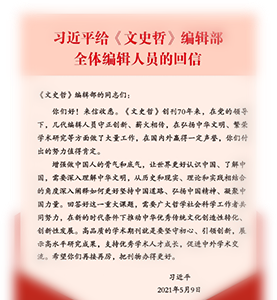小令词牌和节奏研究——从与近体诗关系的角度展开
蔡宗齐
摘要:如何对数目庞大的小令词牌进行合理的分类?如何梳理清楚它们之间的关系,从而揭示小令发展演变的轨迹?这历来是论词家所面临最棘手的问题之一。由于小令在很大程度上是近体诗之“变”,从与绝句、律诗的关系角度来梳理小令词牌和节奏,分门别类,加以分析,将有助于我们获得对小令艺术形式的新认识。为了研究的分级,可以将311种唐宋小令词牌分为五大类:(一)完全沿用近体诗体式的词牌;(二)绝句、律诗的长度稍加增减而成的词牌;(三)以五、七言句为主的词牌;(四)以三、四、六句为主的词牌;(五)以三种以上不同字数句混合而成的词牌。在完成词牌的分类和初步分析之后,进一步勾勒小令节奏从近体诗模式到词本色,从“齐”到“杂”的发展过程,分析归纳出小令节奏的七大特点,并在更加广阔的诗歌史语境中评价小令节奏的审美意义。
A Study of the Tunes and Rhythms of Xiaoling: from Its Relation to Modern Style Poetry
Cai Zongqi
Abstract: How to make reasonable classification of numerous tunes of Xiaoling (short poem)? How to sort out the relation among them, thus reveal the evolvement of Xiaoling? Those have always been the most difficult problems puzzling the critics of ci. Since Xiaoling is largely the “variant” of modern style poems, to carding, classify and analyze the tunes and rhythms of Xiaoling from its relation to quatrains and regulated verses, will helps gain new insights into the art form of Xiaoling. For hierarchical classification, 311 tunes of Xiaoling in the Tang and Song Dynasties could be divided into five categories, i.e. the tunes completely following the style of modern style poems; the tunes making a little increase and decrease of the length of quatrains and regulated verses; the tunes mainly composed of pentasyllabic and heptasyllabic verses; the tunes mainly composed of trisyllabic, quadrisyllabic, and hexasyllabic verses; and the tunes being a mixture of more than three kinds of verses with different number of characters. After completion of classification and preliminary analysis of the tunes, the paper further outlines the development of the rhythm of Xiaoling from the mode of modern style poetry to the substance of ci, as well as the process from being regular to being miscellaneous; concludes seven characteristics of the rhythm of Xiaoling; and evaluates the aesthetic significance of the rhythm of Xiaoling in a broader context of the history of poetry.


